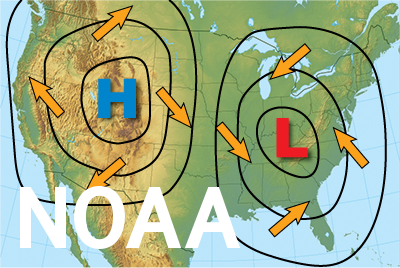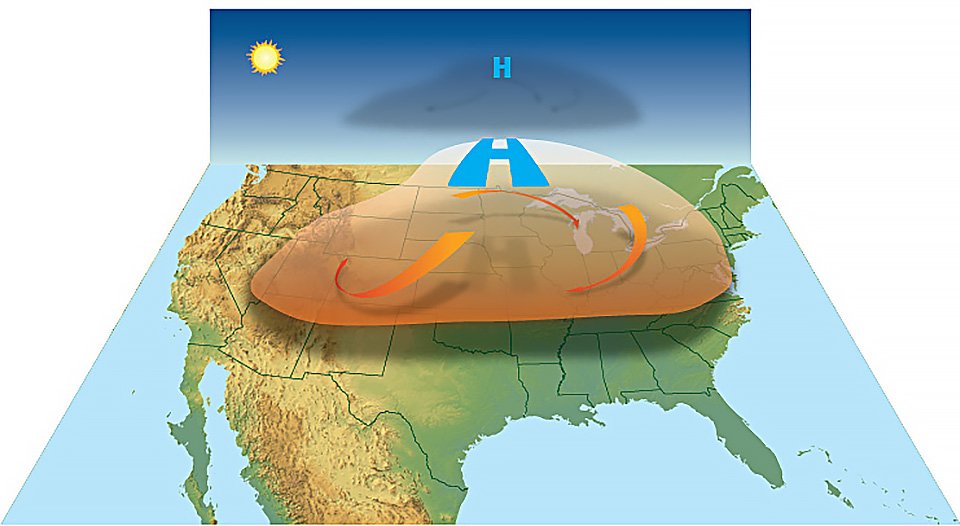The Science of Heat Waves
During heatwaves, you’ll often hear meteorologists mention that a ridge of high pressure is responsible for the high temperatures. You also may have heard of a heat dome. What do all these terms mean and how does higher pressure lead to higher temperatures?

Just about all of the earth’s weather takes place in the lowest layer of the atmosphere, the troposphere. With the exception of a few circumstances, air in the troposphere is not able to cross into the stratosphere. When there is high pressure (a ridge) aloft, the atmosphere wants to equalize and will try to spread out the system. Since it cannot break through (upward) into the stratosphere, the air mass has nowhere else to go but out and down (toward the surface). As a result of thermodynamics, the air heats up as it sinks. This is partly why high pressure brings higher temperatures.

Part of what makes heat waves so dangerous is their longevity. When large ridges take hold, they can be very stubborn and hard to get rid of. Eventually, without any other air masses or systems to nudge the ridge away, what meteorologists call a ‘heat dome’ can form. The sinking air, along with the lack of any other weather systems, can cause the high pressure to essentially act as a lid on the air near the surface. This allows the sun to continuously warm the air at the surface day after day.

These are the two main reasons that high pressure systems can lead to periods of excessive heat. Although, as with everything in meteorology, there are plenty of nuances and other atmospheric influences which also play various roles. It is always critical to practice heat safety, but especially during extended periods of excessive heat. Follow the First Alert Weather Team for the latest on what you need to know and how to stay safe during intense weather.
Have you downloaded the 'KESQ First Alert' app yet? It's FREE! Click here

You'll stay up-to-date with the latest weather videos. In addition, be able to monitor the changing conditions from wherever you are!




